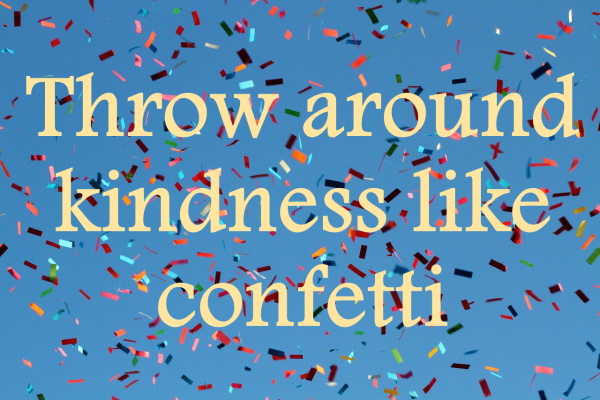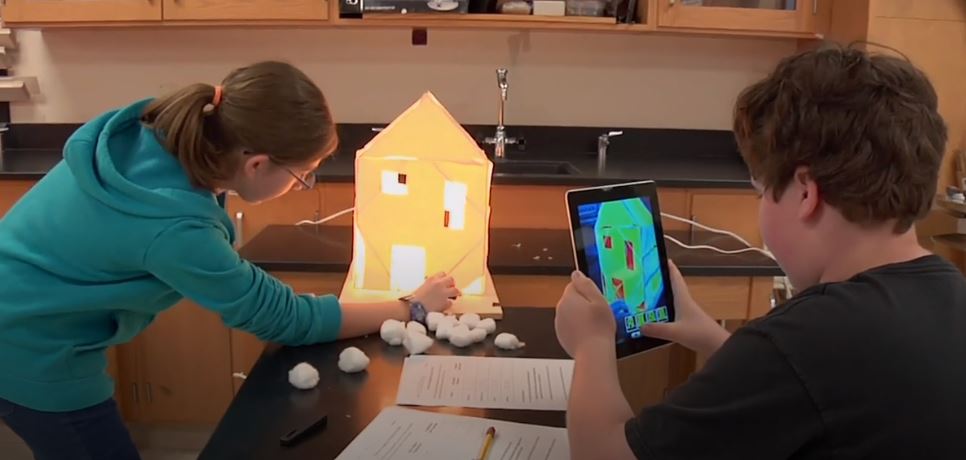
Return to listing
IPADS TO SUPPORT PBL 0:00-5:51, 7:29-7:58, 10:53-13:19 |
- Digital Story Showcase!

- Puppet video screening. The creativity just keeps flowing.....
- Project-Based Learning/Problem-Based Learning
- What is Project-Based Learning?
- Guiding Pedagogy: Students need active, engaging, hands-on/minds-on activities that are grounded in a real world problem
- Project-Based Learning (PBL) includes:
- Students learning content knowledge and skills to apply them in the real world
- Student having more control over and responsiblity for their own learning
- Teachers serving as coaches and facilitators of inquiry and reflection
- Students (usually, but not always) collaborating in pairs or groups
- Students learning content knowledge and skills to apply them in the real world
- There are two different frameworks of this inquiry-based approach to teaching:
- Problem-based Learning, which has students working together to solve a problem but may not include a student project,
- Project-based Learning, which has students tackling a complex task with a final deliverable such as a presentation or artifact that reflects the process and the solution.
- "These inquiry-based teaching methods engage students in creating, questioning, and revising knowledge, while developing their skills in critical thinking, collaboration, communication, reasoning, synthesis, and resilience
(Barron & Darling-Hammond, 2008)."
- SOURCE: http://www.edutopia.org/pbl-research-learning-outcomes
- PBL Resource of Note: http://www.edutopia.org/project-based-learning
- According to PBLWorks which is considered one of the best sources for PBL (PBLWorks is the artist formerly known as the Buck Institute):
"Gold Standard PBL teaches students the important content standards, concepts, and in-depth understandings that are fundamental to school subject areas and academic disciplines. In good projects, students learn how to apply knowledge to the real world, and use it to solve problems, answer complex questions, and create high-quality products."
Essential Project Design Elements
- Challenging Problem or Question
- Sustained Inquiry
- Autheticity
- Student Voice & Choice
- Critique & Revision
- Reflection
- Public Product
- PBL: Examples to explore - click on the Download Resource File PDF to see the project plan/outline
NOTE: To view the materials, you will need to sign up for a free account. Make WCU your school
- Sample Project: Lending a Helping Hand (5th grade)
http://www.bie.org/object/document/lending_a_helping_hand
- Sample Project: A Home for Everyone (2nd grade)
http://www.bie.org/object/document/a_home_for_everyone
- Sample Project: Design Wars (4th grade)
https://www.bie.org/object/document/design_wars
- Sample Project: Lost! (9th grade)
http://www.bie.org/object/document/lost
- Essential Project Design Elements Checklist (Case Study: Rube Goldberg Machine & Documentary)
https://www.bie.org/object/document/pbl_essential_elements_checklist
- Project Design Rubric
https://www.bie.org/object/document/project_design_rubric
- Project Ideas for PBL Units across K-12 and the curriculum: https://my.pblworks.org/projects (point bearing activity)
In pairs or individually, choose a project that might be applicable in your classroom.- First, read through the project description *completely* so you understand what the project entails
- Next, make a copy of the PBL Project Summary/Response document and CALL IT YOUR (AND YOUR PARTNER'S) NAME
https://docs.google.com/document/d/1cY5_OObfJn7IEbjzxMe6ADuxikgiIGl3X7qO-FPelI4/copy
- Respond to the questions using details and examples from the project documents in your own words. AVOID overuse of copy/paste.
- SHARE IN THE CLASS FOLDER FOR PBL_466 OR PBL_446
- From within the document, choose "File" and "Move"
- Browse until you find "Shared with me" and then the folder for your section
- "Move here" and "Move"
- DUE Tuesday, April 12 by midnight
- First, read through the project description *completely* so you understand what the project entails
OTHER GOODIES FROM PBL WORKS
- Essential Project Design Elements Checklist
http://my.pblworks.org/resource /document/pbl_essential_elements_checklist
- Project Design Rubric
http://my.pblworks.org/resource /document/project_design_rubric
TOOLS O' THE DAY:
Save internet resources related to a topic, such as your EdTPA Learning Sequence using a social bookmarking site such as:
- Diigo https://www.diigo.com/ With this you can store and share web-based resources with students or your peers by just sending them the link.
- Symbaloo http://www.symbaloo.com/ This resource creates sets of tiles called "webmixes" that can be arranged topically. Each tile links to a website or resource on the web.
WHAT DOES IT LOOK LIKE? PBL IN THE CLASSROOM
| Project-Based Learning Comes to a Rural Middle/High School |
Elementary Students Engaged in Project-Based Learning |
